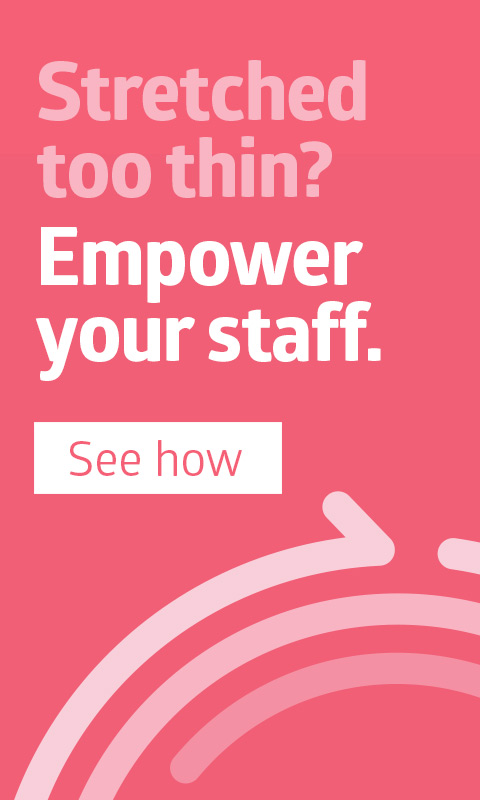This is staff empowerment

Frontline staff across the continuum are eager to learn and become more empowered in skin breakdown prevention, says Kim Kehoe, BSN, RN, CWOCN, DAPWCA, Medline clinical nurse specialist, Acute Care Division. “Skin health is just not pressure injuries,” she says. “It’s about other manifestations of skin damage, such as skin tears and medical adhesive-related skin injury (MARSI). Frontline staff recognizes that skin health is important.”
What does an empowered frontline staff look like?
There’s a defined system in place.
Ideally, the wound care nurse is a resource and expert, not a tasker, says Margaret Falconio-West, BSN, RN, APN/CNS, CWOCN, DAPWCA, Medline senior vice president, Clinical Services, Acute Care Division. Frontline staff, nursing directors and executives and administrators turn to him or her for expertise and leadership. Standardized processes are in place to simplify choices for staff. Most important, wound care nurses fully embrace their role in empowering staff.
The facility is staffed appropriately.
Other Medline specialists say that adequate staffing comes first in empowering staff. The issue is attracting national attention as acute and post-acute settings treat higher acuity patients and residents than ever before. “On the acute side, nurses can end up taking care of six or more patients if they’re not fully staffed,” says Amy Robison, BS, RN, CWOCN, CFCN, Medline clinical education specialist, Post-acute Division. “Our patients are too sick for that,” says the one-time acute care nurse. “We need to have enough patient care technicians (PCTs) or nursing assistants to assist with the basics of skin care—meaning the preventive side of skin care,” she adds. “We must have guidelines to assist frontline staff, particularly in the absence of a wound care expert at a facility.”
Staff is confident and inquisitive.
Confident nurses are knowledgeable and not afraid to ask questions, says Patricia Turner, RN, BSN, CWS, CWOCN, Medline clinical nurse specialist, Acute Care Division. “When they do ask for something, the solution must be tangible, concrete and something that a facility or institution can easily deliver. Their requests must be actionable.” Confident nurses also act independently. Rather than immediately consult a wound care nurse, “they are able to thoroughly assess, treat, or figure out certain aspects of skin care or wound care,” she says.
People feel appreciated.
Recognition comes in many forms—a simple thank you, a note of appreciation, a small gift, an excellence award, a clothing allowance or a call-out in a facility’s newsletter. It also can come from many people—the director of nursing, the wound care nurse, or an executive or administrator. “It’s important to recognize that nurses are in the trenches and making a difference,” Robison says.
Exclusive printable poster
How does pressure injury staging compare to apples?
Use this educational poster to find out.
Exclusive printable poster
How does pressure injury staging compare to apples?
Use this educational poster to find out.
Everyone is knowledgeable in skin health.
What’s the best way to provide learning when time and staffing are so limited? One answer lies with convenience and best practices. Online learning and 30-minute microbursts of learning are perfect for retention—and for busy staff, say these wound care experts. Having a Skin Champion team also helps spread skin health knowledge throughout the facility. The team is composed of RNs or CNAs and PCTs from different units who participate in monthly sessions on skin health. They bring that knowledge back to their floors and act as a resource for their units.
Staff is armed with the right tools and resources.
Joanne M. Labiak, MSN, CRNP, CWOCN, CWS, Medline vice president of Clinical Services, Post-acute Division stresses that empowerment is more than education. “It’s global,” she says. “It’s about giving nurses resources, the autonomy to treat what they see and the opportunity to continually learn.”
Frontline staff needs easy-to-use and readily accessible tools and products. A case in point is checklists. “We need standardized checklists for skin and wound assessment and pressure injury prevention,” Robison says. “Checklists improve safety and quality of care and reduce nurses’ stress levels as they care for higher acuity and more medically complex patients.”
Everyone feels responsible for care—for the long term.
With empowerment comes a sense of ownership and responsibility. “Nurses need autonomy and the authority to be able to treat their patients, clients and residents independently,” Labiak says. That’s where clinical guidelines come in, she says, because with them, nurses can make sound clinical decisions. “It’s empowering to know skin injuries, know how to treat them and to pass that knowledge and those resources to nursing assistants or family members,” she says. That said, Kehoe and Turner contend that the biggest challenge rests in maintaining autonomy and education over the long term. They agree that it can be done with the right tools, including competency measurements, post-tests and ongoing education.

